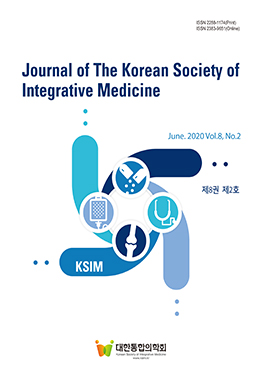Purpose : The purpose of this study was to research the effects of dual-hemisphere transcranial direct current stimulation (dual tDCS) and modified constraint-induced movement therapy (mCIMT) to improve upper extremity motor function after stroke.
Methods : The study period was from August 2019 to November 2019, and included 24 patients who met the selection criteria. Participants were divided into 2 groups: dual tDCS and mCIMT, and sham dual tDCS and mCIMT group. Dual tDCS and mCIMT group performed mCIMT immediately after applying dual tDCS for 20 minutes, and sham dual tDCS and mCIMT group performed mCIMT immediately after applying sham tDCS for 20 minutes without turning on the power source. Total interventions were conducted 5 times per week for 4 weeks, and mCIMT was conducted for 30 minutes per session for both experimental and control groups. Fugl-Meyer assessment (FMA) and Motor Activity Log scale (MAL) were analyzed before and after 4 weeks of intervention.
Results : Both experimental and control groups showed significant changes in FMA, Amount of Use (AOU), and Quality of Movement (QOM) of MAL. When the differences between groups was compared using ANCOVA, the experimental group showed a greater improvement in FMA and AOU of MAL than the control group.
Conclusion : In order to enhance the effect of improving upper limb function of stroke patients, dual tDCS could be applied to provide more effective treatment in the clinical setting. Further studies will be needed in larger groups of stroke patients, including long-term follow-up, and multi-group comparisons through the establishment of anodal tDCS and mCIMT, cathodal tDCS, and mCIMT groups to clarify the effects of dual tDCS. In addition, research is needed to establish a protocol for tDCS, and this evidence-based intervention protocol is expected to be used in the clinical setting as an interventional method for various purposes.




